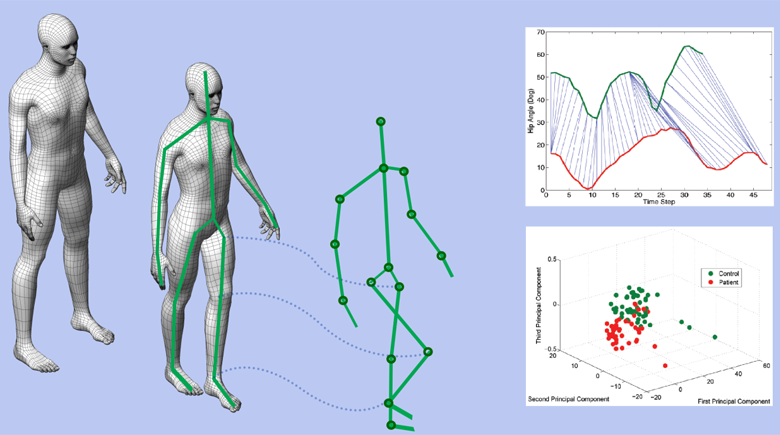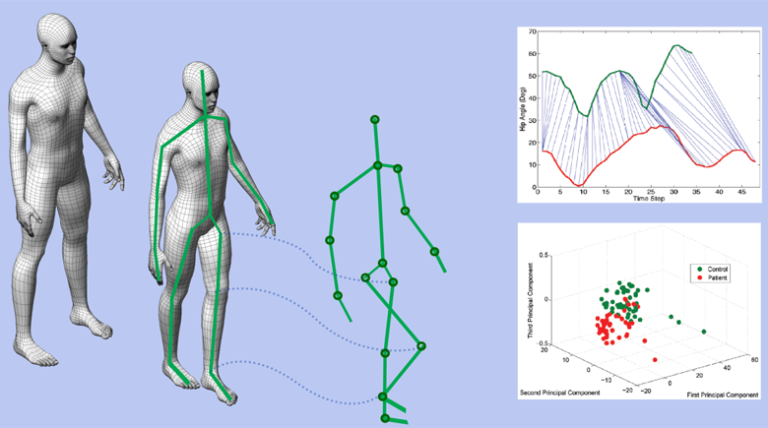
Gait impairment is a prevalent and important difficulty for patients with multiple sclerosis (MS), a common neurological disorder. An easy to use tool to objectively evaluate gait in MS patients in a clinical setting can assist clinicians to perform an objective assessment. The overall objective of this study is to develop a framework to quantify gait abnormalities in MS patients using the Microsoft Kinect for Windows sensor; an inexpensive, easy to use, portable camera. Specifically, we aim to evaluate its feasibility for utilization in a clinical setting, assess its reliability, evaluate the validity of gait indices obtained, and evaluate a novel set of gait indices based on the concept of dynamic time warping. In this study, 10 ambulatory MS patients, and 10 age and sex-matched normal controls were studied at one session in a clinical setting with gait assessment using a Kinect camera. The Expanded Disability Status Scale (EDSS) clinical ambulation score was calculated for the MS subjects, and patients completed the Multiple Sclerosis Walking Scale (MSWS). Based on this study, we established the potential feasibility of using a Microsoft Kinect camera in a clinical setting. Seven out of the eight gait indices obtained using the proposed method were reliable with intra-class correlation coefficients ranging from 0.61 to 0.99. All eight MS gait indices were significantly different from those of the controls (p-values less than 0.05). Finally, seven out of the eight MS gait indices were correlated with the objective and subjective gait measures (Pearson’s correlation coefficients greater than 0.40). The study shows that the Kinect camera is as an easy to use tool to assess gait in MS patients in a clinical setting.

